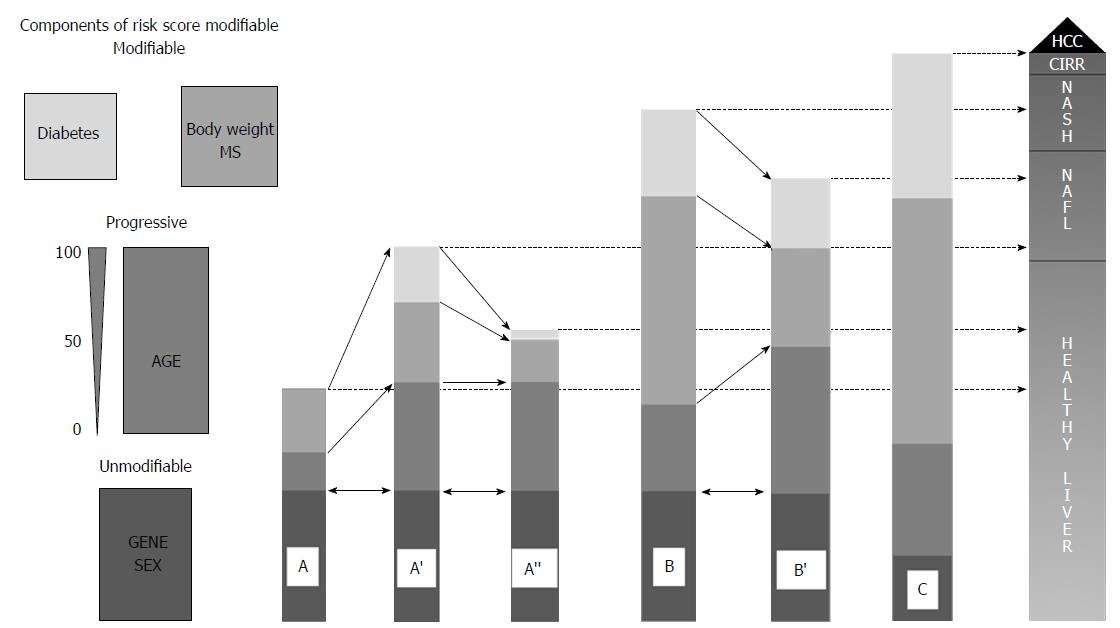Copyright
©The Author(s) 2018.
World J Gastroenterol. Nov 21, 2018; 24(43): 4835-4845
Published online Nov 21, 2018. doi: 10.3748/wjg.v24.i43.4835
Published online Nov 21, 2018. doi: 10.3748/wjg.v24.i43.4835
Figure 2 Combined genetic/clinical risk score built through a few strong gene variants and relevant clinical variables.
Genetic background and sex (unmodifiable), age (progressive), the components of metabolic syndrome (with diabetes in a pre-eminent position-modifiable-) could be weighed and combined to make up an individual risk score. This type of score can have the advantage of being dynamic, changing as the clinical conditions change over time, and allowing to estimate the impact of intervention strategies on the onset/outcomes of the disease. In the first column, patient A has an unfavorable genetic background; he is 20 years old, he is normal weighted, and he is not diabetic. The risk score changes when he is in his 60s, is lightly overweight and with reduced glucose tolerance (column A’). In column A’’, the same patient in his 60s but has made efforts to stay lean and with a better glycemic metabolism (intervention). Column B and B’ represent the score of a patient who has an unfavorable genetic background; he is in his 40s, he is obese and he has impaired glucose metabolism. The risk score changes when he is in his 70s but made efforts to stay lean and with a slightly better glucose tolerance (intervention strategy). Column C represents the individual score of a patient with a favorable genetic background combined with with overweight and diabetes as protagonists. CIRR: Cirrhosis; GENE: Genetic background; HCC: Hepatocellular carcinoma; MS: Metabolic syndrome; NAFL: Non-alcoholic fatty liver; NASH: Non-alcoholic steatohepatitis.
- Citation: Vespasiani-Gentilucci U, Gallo P, Dell’Unto C, Volpentesta M, Antonelli-Incalzi R, Picardi A. Promoting genetics in non-alcoholic fatty liver disease: Combined risk score through polymorphisms and clinical variables. World J Gastroenterol 2018; 24(43): 4835-4845
- URL: https://www.wjgnet.com/1007-9327/full/v24/i43/4835.htm
- DOI: https://dx.doi.org/10.3748/wjg.v24.i43.4835









